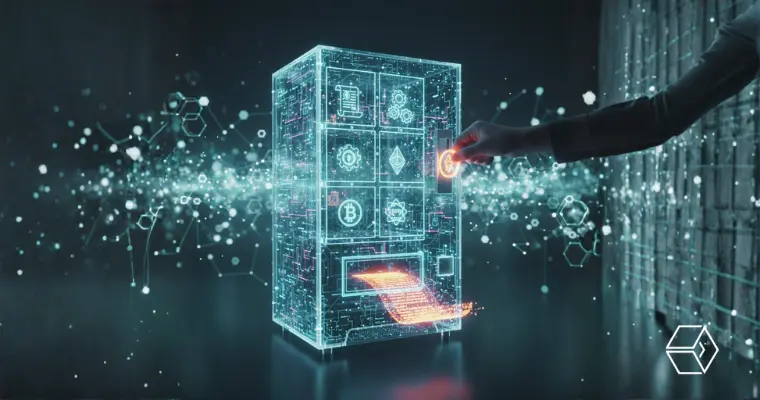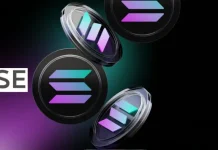
Most people regard the expression “smart contract” as something that belongs to a cryptographer’s laboratory – technical, abstract, and totally out of everyday life. However, on the contrary, the development of smart contracts boils down to one thing only: to create a situation where people will not be needed anymore, as the code will automatically do the job of enforcing the contracts.
To put it another way, it is not necessary to know everything about blockchain to understand the idea – simply think of a vending machine. You put in money, and after selecting a snack, the machine will automatically give you your item if the conditions are met. Therefore, there is no cashier, no bargaining, and no waiting.
The Trust Problem in Digital Transactions
In the conventional world, contracts are based on trust and, often, the necessity of involving 3rd parties. When two individuals or companies agree, they commonly also rely on intermediaries like banks, attorneys, or notaries for the validation of the terms, holding the money, and making sure that the parties of the deal comply with the contract. This whole cycle is gradually becoming an obsolete and expensive activity, as it is also susceptible to human mistakes.
What if the contract could be executed like an automated one, with no lawyers involved, no waiting, and no one to cheat?
That is the point of smart contract blockchain systems, which automatically enforce the agreement. They transfer the very basis of trust from human enforcement to mathematical certainty. The logic is coded once, made available for everyone, and runs without any interruption as long as the right conditions are in place.
What Is a Smart Contract?
A smart contract is a digital agreement that executes itself automatically, written in code, and placed on a blockchain. In a way, it acts like a magic box that does not trust anybody but rather uses its own rules to conduct the operation.
The components of smart contracts are:
- Code: It is the rules and conditions of the agreement – who, what, and when.
- Blockchain: This is the secure, decentralized ledger that transparently records everything.
- Trigger: An event or input that activates the contract (like payment or confirmation).
The idea can be understood in just one line:
“A smart contract doesn’t think, it simply follows its code when the right inputs appear.”
Basically, smart contract automation eliminates the need for manual enforcement of terms and conditions as it is replaced with self-verifying digital logic.
Understanding Smart Contracts Through a Vending Machine
Let’s use the vending machine analogy, which is very popular in explaining blockchain.
You approach a vending machine, feed it $5, and select your treat. The machine verifies that you have provided the correct amount. If yes, it dispenses your treat. If not, it does nothing and returns your money.
Here is how that corresponds to smart contract blockchain logic:
| Real World | Smart Contract World |
| You (the customer) ↓ |
User interacting with the blockchain ↓ |
| Vending machine (hardware + code) ↓ |
The smart contract program ↓ |
| Snack delivery | The blockchain transaction outcome |
The miracle of technology is actually in automation and trustless execution:
- Input verification: The vending machine verifies if you have put in the right amount. Similarly, the smart contract checks if the conditions are satisfied.
- Execution: The machine gives out the snack. The contract performs the transaction.
- Transparency: You can observe the process of the machine just as everybody on the blockchain can confirm what occurred.
- Immutability: The vending machine can’t change its price to $10 without notice, similar to a smart contract’s rules, once enacted, are beyond modification.
There was no cashier, no waiting, and no conflict. Everything was clear-cut, showing us that Smart contract automation has reached its most uncomplicated form.
How Smart Contracts Work on Blockchain
Let’s analyze the very basics of smart contracts in detail:
- Code Creation: A programmer employs a programming language such as Solidity (Ethereum), Rust (Solana), or Vyper to develop the contract.
- Deployment: The contract is then transferred to the blockchain. It receives a distinct address post-deployment and is made accessible to the public.
- Triggering: An individual or another contract initiates a transaction that meets the input criteria established by the contract, such as a payment or a request.
- Execution: The contract performs verification of its terms automatically and proceeds with the actions accordingly, either transferring, granting access, or recording data.
- Recordkeeping: The blockchain literally encodes the output permanently. This provides transparency, traceability, and immutability, which means that even the history cannot be modified.
Every single step is deterministic, meaning that every time the same inputs are given, the same outputs will be generated. Such foreseeability is what makes the smart contract blockchain systems reliable across diverse sectors.
Real-World Smart Contract Use Cases
Smart contracts no longer remain only in the hands of theorists; they are now the core of the decentralized economy. Some of the best smart contract use cases are given below:
1. DeFi (Decentralized Finance) Protocols
Smart contracts manage lending and borrowing by automatically matching borrowers with lenders, calculating interest, and even liquidating collateral when there is a breach, while banks are excluded from this process.
2. NFT Royalties
The smart contract, which acts as a secure means of transferring the NFT, automatically pays a royalty to the original creator each time the NFT is sold. Instant payment, no platform involvement, and no waiting time.
3. Insurance Automation
Imagine an insurance policy that automatically pays you if your flight is delayed? Smart contracts are connected to the oracle (external data feed) that triggers payouts once a specific condition is met.
4. Gaming & DAOs (Decentralized Autonomous Organizations)
Smart contracts share game rewards, maintain in-game assets, and guarantee justice in blockchain gaming. In DAOs, they manage the governance, which comprises voting, proposal making, and funding, without a central authority.
Why the “Smart” in Smart Contracts Is a Misunderstanding
Though called smart contracts, they are not clever; they are merely automated. They do not possess any thinking, adapting, or reasoning abilities like AI. Rather, they are rule-based systems that deterministically execute once activated.
Below is a simple comparison:
| Aspect | Traditional Contract | Smart Contract |
| Who verifies it | Humans (lawyers, banks, institutions) | Code (blockchain network nodes) |
| Execution speed | Hours to weeks | Instantaneous |
| Transparency | Often private | Fully public on blockchain |
| Modification | Can be renegotiated | Immutable once deployed |
| Trust Source | Human enforcement | Cryptographic proof |
In short, trust is replaced by code. The contract doesn’t require you to believe it will be executed. You know it will, because the blockchain enforces it automatically.
Smart Contracts Beyond Today: The Future of Digital Agreements
The world of smart contract development is changing faster than ever.
1. Layer-2 and Cross-Chain Smart Contracts
Due to heavy traffic on networks like Ethereum, Layer-2 networks (like Arbitrum or Optimism) perform smart contracts faster and at a lower cost. On the other hand, the concept of inter-blockchain contracts is underway, which would ultimately lead to the development of a decentralized ecosystem that connects all networks.
2. Smart Legal Contracts
The combination of code and law is gaining ground and being called smart legal contracts. These contracts not only involve legally binding terms but also combine them with programmable automation, connecting the judicial system with the blockchain.
3. Enterprise Automation
Smart contracts are being considered by businesses for automating different kinds of tasks, like payroll processing and tracking of royalties. Think of a company where bonuses for employees are paid out automatically if the respective KPIs are met, no spreadsheets, no waiting time.
The vending machine analogy helps understand and visualize the future applications better. Every new smart contract development brings more “snack options,” such as assets and conditions. The industries may be different, but the basic process remains unchanged: code runs when an event triggers it, and this happens in a transparent and automatic manner.
FAQs
-
How to create a smart contract?
Smart contract creation involves the use of blockchain programming languages such as Solidity (Ethereum) or Rust (Solana) by developers. They first outline the logic, then compile the code, and finally, upload it to a blockchain network for public verification and execution.
-
What is a smart contract in blockchain?
A smart contract in blockchain is the type of code that executes pre-defined actions by itself upon a condition being satisfied. It is powered by a decentralized infrastructure, making it automatic, secure, and transparent without the need for human agents.












